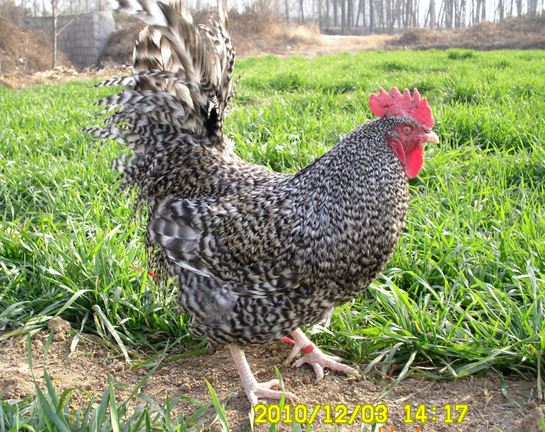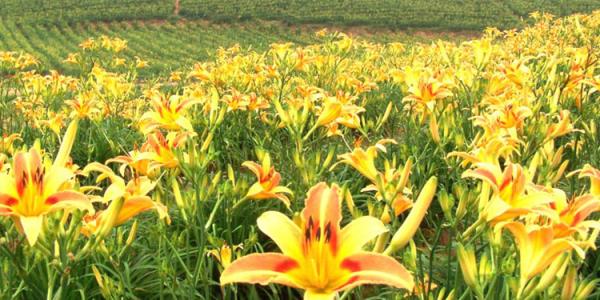Analysis on the breeding benefit Prospect of Luhua Chicken Seedling
The body of Luhua chicken is oval and large, and the weight of adult chicken is only four to five jin at most. Its eggshell is mostly light brown, but whether it is chicken or egg, it is much more nutritious than ordinary broiler, and the meat quality of chicken is more delicious and refreshing. Luhua chicken is also a native chicken breed in China, so it is more suitable for free breeding in rural areas. let's take a look at the prospect of breeding benefits of Luhua chicken seedlings. A complete collection of breeding methods of Luhua chicken.

The price of Reed chicken seedlings is 12-15, with a maximum of 20 yuan. Benefit analysis of Luhua chicken breeding is the same as other breeds of chicken, farmers can develop ordinary scattered breeding, can also develop large-scale breeding. ◆ input (1) the cost of breeding chicken: the price of a Luhua chicken seedling is 8 yuan in the green wild Reed flower chicken ecological breeding garden in central Jiangsu. (2) Feed cost: it is calculated according to the feed cost of 40 yuan per chicken (it may fluctuate up and down in breeding). (3) epidemic prevention and medical expenses: about 5 yuan per chicken. (4) other expenses (labor, hydropower, depreciation of farm assets, etc.): 10 yuan. ◆ output at present, the average price of Luhua chicken on the market is about 60 yuan / kg. Generally, the finished chicken weighs about 2 kilograms and the output can reach 120 yuan. If the input is deducted from the income of ◆, 57 yuan can be gained from raising one Luhua chicken. Reed flower eggs are about 80 in a box, and the number is 30-35. Because the prices of adult chickens and eggs are higher, they are generally put on the market during the Mid-Autumn Festival and Spring Festival, and the income will only be higher. The breeding prospect of Luhua chicken with the improvement of people's consumption level and standard, the original meat chicken and some laying hens are gradually eliminated by the market. High-quality small meat and egg breeds such as Luhua chicken are more and more loved by consumers. As a rare bird in China, Luhua chicken has become the first choice for people's dining tables, festive gifts, high-end restaurants and farm restaurants. At present, chicken seedlings are in short supply, adult chickens are in short supply, and the market potential is great. At the same time, the nutritional value and market price of eggs produced by Luhua chicken are also high, and the profit is very considerable. The breeding advantage of Luhua chicken is 1. The ecological benefit is good. Luhua chicken eats forest insects, reduces forest insect pests, and Luhua chicken feces increase forest nutrients, so as to achieve circular development, effectively control breeding environmental pollution, and have good ecological benefits. 2. Luhua chicken has a large amount of activity, strong climbing ability and long flying distance since childhood. Therefore, the chicken has strong disease resistance, strong posture and strong muscles. This breed of chicken is compact, delicate and well-knit. 3. Luhua chicken has a strong ability to recognize its nest. no matter how far it is to swim during the day, it always goes back to its nest to have a rest at sunset. Therefore, it is very suitable for loose breeding in different places (plains, hills, grasslands, mountains, etc.). 4. The food chain of Luhua chicken is very wide. Weeds, flowers, leaves and roots, grass seeds and fruits, moths, maggots, earthworms and insects in the mountains can all become the food of the chicken. The risk of breeding Luhua chicken indicates that the climate in winter is cold, and the temperature needed in the house is very different from that in the outside world. It is necessary to ventilate and keep the temperature in the house, which is the main problem that should be solved in winter. The feces and wet padding excreted by the flock should be cleaned in time to prevent the accumulation and concentration of ammonia in the henhouse, resulting in ammonia poisoning or other diseases in broilers. At the same time of ventilation, be careful not to cause the temperature in the house to rise and fall. When the physique of broilers is weak and their resistance decreases, some diseases can also be complicated with respiratory diseases. Those who have vaccination should be vaccinated in strict accordance with the immunization procedure. The key is to do a good job in the prevention and control of avian influenza, Newcastle disease, infectious bursal disease, infectious bronchitis, infectious laryngotracheitis, fowlpox and other diseases. However, because the price of Luhua chicken is relatively expensive, it will not sell as much as ordinary chickens at the common people's table in the short term, so the main purpose of breeding Luhua chicken is to have a good market. you have to find your own customer group and make a unified plan. My suggestion, if the scale is large, while wholesale while building their own stores, then find the hotel farmers' markets to sell.
The growth period of Luhua chicken is 4-6 months. The body weight of male chicken is about 2.5kg and that of female chicken is about 2kg. The feeding division of the growth stage is divided into three stages: (1) the brood feeding stage, from shelling to the first 20 days, the feed is puffed feed in the 20 days, and it is best to blanch the feed in the place without puffed feed, and feed it in cold and dry to reduce intestinal diseases. (2) during the initial feeding stage, from the completion of the brooding stage to the next 20 days, 20% green feed can be added during the 20 days (that is, cabbage, pumpkin, carrots, celery, zucchini, etc., vegetables that can be eaten by humans can be used as green fodder for the chicken, crushed, mixed and fed with miscellaneous grains such as corn flour), various vegetables contain a lot of vitamins and various nutrients The delicious and edible of Luhua chicken can be greatly increased, and the production cost can be greatly reduced. (3) in the breeding stage, the addition of all kinds of green fodder can reach about 45% within three months after the initial breeding stage. Pay attention to the humidity of the mixture to master, grasp in the hand do not disperse do not drip water. It is more scientific to reduce the green feed to about 35% during the laying period. The management measures of free-range breeding of Luhua chicken are as follows: 1. The age and density of stocking. Generally, it is 30 days old in summer, 45 days old in spring and autumn, and 50-60 days old in winter. Density requirements: before the age of 12 weeks, it is appropriate to raise about 80 Luhua chickens per mu, and after the age of 12 weeks, it is reduced to about 40-60 per mu. Too high density will also cause non-point source pollution and even affect orchard production. The size of each flock had better be no more than 500. 2. Matters needing attention in stocking season and initial stocking. The stocking of Luhua chicken is best from spring to autumn. Choose sunny and windless weather at the beginning of stocking, and let the chickens move near the henhouse for 1-3 hours around noon. In the future, the stocking time will be extended day by day until the chickens adapt to the environment in the orchard. 3. The feeding and management of Luhua chicken. They were fed once in the morning, in the middle and in the evening in the first week, and once at noon and evening in the second week. After that, the chickens were not fed before grazing every morning, and the chickens were forced to go out to look for food. At noon, they were replenished once as appropriate. In the evening, the feed supply was determined according to the filling degree of the chicken crop, so that the chickens could have enough to eat. Supplementary feeding is generally made with whole grains, bran and artificially raised earthworms, insects and so on. Water supply: free drinking water is adopted for stocking chickens. In addition to setting up drinking fountains in the chicken coop and placing an appropriate amount of drinking fountains in the stocking area, drinking fountains should always be kept clean and hygienic. 4. insects induced by light and artificially propagated insects were fed to chickens. In summer and autumn, light bulbs can be installed in front of the henhouse at night to trap insects so that chickens can hunt for food to supplement their animal protein needs. Artificial breeding of insects can also be used to supplement feeding. The specific method is to dig a pit about 1.5 meters wide, 1.8 meters long and 0.5 meters deep in the orchard forest, with a layer of straw at the bottom and a layer of tofu dregs on top, and then a layer of cow dung or dried pig dung. Cover the surface with a layer of soil. Pour a basin of rice washing water every day. After a week, the worm can be opened and pecked by the chicken. After eating, cover the soil, and still wash the rice water, you can continue to use insects. This is a method that can not only solve the shortage of animal protein in chickens, but also plough the orchard land, increase soil organic matter and fertilize the soil fertility. 5. Reasonable fattening and timely listing. When Luhua chicken reached 120 days old, it could be fattened with energy feed such as corn, wheat, grain and so on. When the Luhua chicken grows to 150 days later, when the fertility is moderate, it can be listed on the market at the right time combined with the market price, selling the rooster first and then the hen. At this time, the accumulation of nutrients, aromatic substances and flavor elements in chicken meat has reached the content standard, which is the best combination point of weight, quality and cost.
Time: 2019-05-05 Click:
- Prev

How to grow cauliflower in detail, how much money can be earned by analyzing the benefit of growing cauliflower?
Cauliflower, also known as golden needles, is an herb, with hemostatic, anti-inflammatory, heat-clearing and other effects, in the market sales are very good, and easy to grow, so many growers cultivate, so how is it planted? The point is, is cauliflower really profitable? What are the specific benefits?
- Next

Where is the technical requirement for snake skin fruit planting in China? how to eat the efficacy and function of snake skin fruit?
Snake skin fruit, also known as Sharat, gets its name because it looks like snake skin. although it does not look delicious in appearance, snake skin fruit is one of the most famous fruits in Southeast Asia. It has high nutritional value and is one of the varieties with the highest potassium content in fruit. And rich in pectin, which is very beneficial to the human brain.
Related
- Fuxing push coffee new agricultural production and marketing class: lack of small-scale processing plants
- Jujube rice field leisure farm deep ploughing Yilan for five years to create a space for organic food and play
- Nongyu Farm-A trial of organic papaya for brave women with advanced technology
- Four points for attention in the prevention and control of diseases and insect pests of edible fungi
- How to add nutrient solution to Edible Fungi
- Is there any good way to control edible fungus mites?
- Open Inoculation Technology of Edible Fungi
- Is there any clever way to use fertilizer for edible fungus in winter?
- What agents are used to kill the pathogens of edible fungi in the mushroom shed?
- Rapid drying of Edible Fungi

